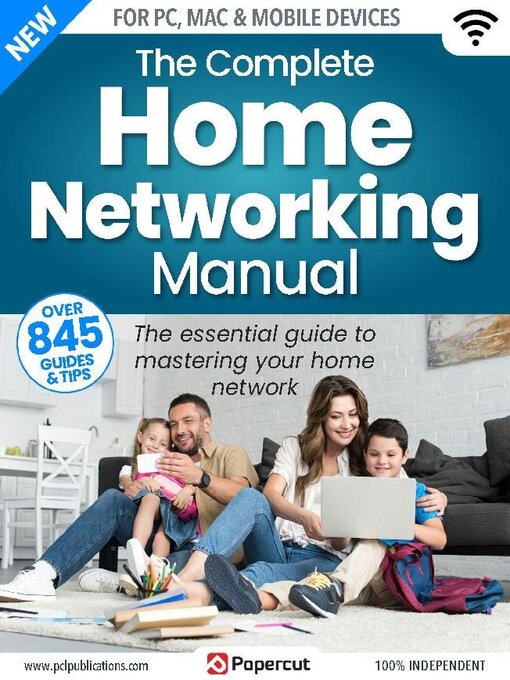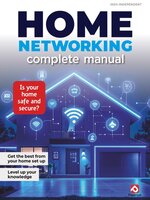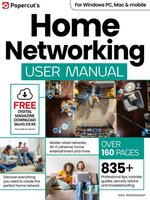It’s amazing what you can do across your home network. As well as getting on the Internet with your computers and mobile devices, you can plug in a hard drive or a printer for access over your home network. You can set up a media server to enjoy your movies, pictures and sounds from any device connected to your home network. You can set up parental controls so you can keep an eye on what your children are doing online. You can even connect DECT telephones and set up fax services, alarms, block nuisance calls and more. We show you how to set up a router, extend your Wi-Fi network with wi-fi repeaters, tackle exciting projects that help you get more from your household technology and how to service and maintain your device. 100& Independent.
The Complete Home Networking Manual
INTRODUCTION TO HOME NETWORKING
Your Home Network • Your home network is something most of us don’t even consider when we power on our devices and computers and surf the Internet; however, there’s more to it than you think. How do we get on the Internet? How do we print from all our devices? How does it all work? Let’s have a look.
Routers: How do they work? • Every Internet connected home, office, and multi-site megacorporation in the world uses a router to connect to the Internet. The router is the bridge that gaps your home network to the wider world of the Internet, as well as being the hub of all your connected devices.
Switches: What are they, how do they work? • Most modern routers contain at least a four-port switch built into the back of the unit. These ports allow for physical, Ethernet connection to the router from networked devices. But what are they, and how do they work?
Wi-Fi: What is it, how does it work? • It’s not that long ago when wireless communications across the network was akin to witchcraft. At the time we had coaxial cables networking everything, then Ethernet, and then Wi-Fi began to emerge, and it was utterly brilliant.
Powerline Adapters: Extend Your Network • If your home network doesn’t reach the furthest corners of your house, maybe because some rooms are too far from the router, or a thick stone wall blocks your Wi-Fi signal, powerline adapters are a potential solution. But what are they, and how do they work?
Network Extenders: What are they, how do they work? • If the cabling option, together with powerline adapters, doesn’t work for you, then you can easily expand the reach of your Wi-Fi network by utilising wireless extenders. They’re cost-effective and easy to setup.
GETTING THE MOST FROM WI-FI
Benefits of a Wireless Network • As most routers these days come with a Wi-Fi setup and perhaps several Mesh nodes out of the box, it’s easy to assume that the whole world wants you to go wireless. For those of you who are wary of Wi-Fi, though, here’s ten good reasons to consider wireless over wired networks.
Making a Plan • Before you purchase any number of wireless network extenders and other such technology, it’s best that you begin by making a plan of action. Where do you want your Wi-Fi signal to reach? How many extenders will you need?
Wireless to Wired and Back: Creating a Wireless Backbone • While having every component on the network communicate via Wi-Fi, it’s not always possible or an effective way to work. Some devices work best when using Ethernet, sometimes it’s just easier to run a cable than purchase extra Wi-Fi kit.
Improving Wi-Fi Security • Most routers from an ISP have a reasonable amount of protection enabled by default, however, as with most things of a technical nature, it’s possible to improve this further. Here are our top ten tips on how to improve your Wi-Fi security.
GETTING THE MOST FROM WIRED NETWORKS
Benefits of a Wired Network • Wireless is a much simpler and neater process to opt for when setting...

 Issue 8
Issue 8
 Issue 7
Issue 7
 Issue 6
Issue 6
 Issue 5
Issue 5
 Issue 4
Issue 4
 Issue 3
Issue 3
 Issue 2
Issue 2